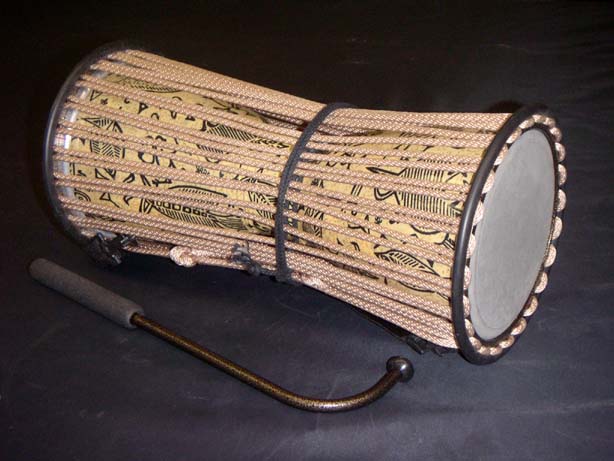
Gángan – The Yorùbá Talking Drum
Gángan is an hourglass-shaped pressure drum used by the Yorùbá people of southwestern Nigeria. Also known as ‘The Talking drum’, gángan holds a special place in the tradition of the Yoruba people, and its use in Yoruba folklore cannot be overemphasized.
Gángan’s origin can be traced to the Old Oyo Empire in South-West, Nigeria where it was introduced as a means of communication during the inauguration of the Alaafin of Oyo.
The drum’s communicative capability is based on the three tones of Yorùbá. With Yorùbá being the source language of the drum, it is designed to produce notes which are analogous to Yorùbá tones.
Gángan has six components, namely a wooden barrel, two surface membranes, tension cords, a taut rope, a strap, and a curved stick. The wooden barrel is carved into an hourglass shape with a tunnel-like hole linking the two ends.
Read Also: Mpape Crushed Rock
There are two membranes in this drum. The membranes which are made from the skin of a goat’s foetus are stretched with threads over the holes of the wooden barrel. These membranes covering the two edges of the drum are connected and tightly held together with cords which are leather strings.
These cords run along the body of the drum. Given the fact that the cords are connected to the two membranes of the drum, the membranes can be stretched by tensioning the cords. It is required for the membranes of the drum to be loose or slack on the drum barrel before drumming.
These adjustable cords can determine the pitch of the drum. If the cords and strings are pulled hard, the sound or tone from the drum would increase and if the chords are softly squeezed, the sound will be low.
A curved stick is used for striking the drum. In order to avoid puncturing the drum, the head of the stick is covered with flat rubber.
The drum is suspended over the left or right shoulder of the drummer with a strap and the drum hangs under the armpit. This strap is made from a padded cloth.
The talking drum is frequently used in modern churches, festivals, wedding ceremonies and carnivals.
